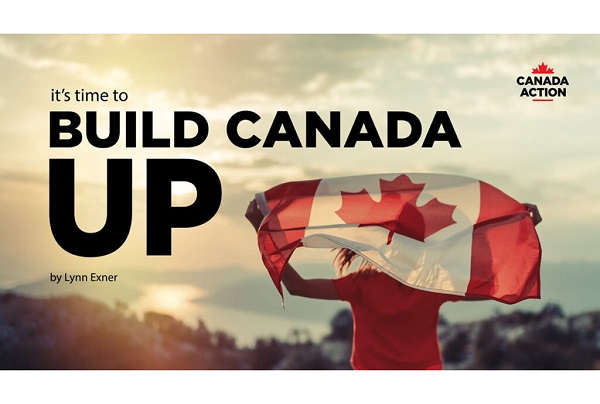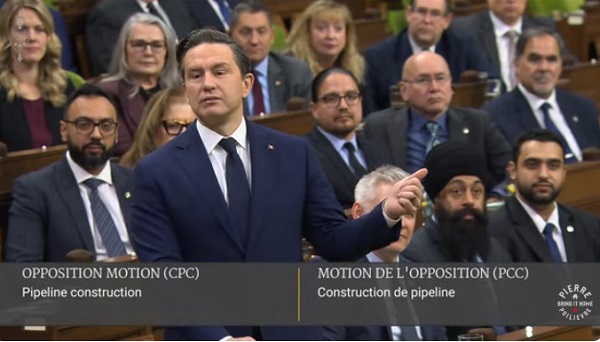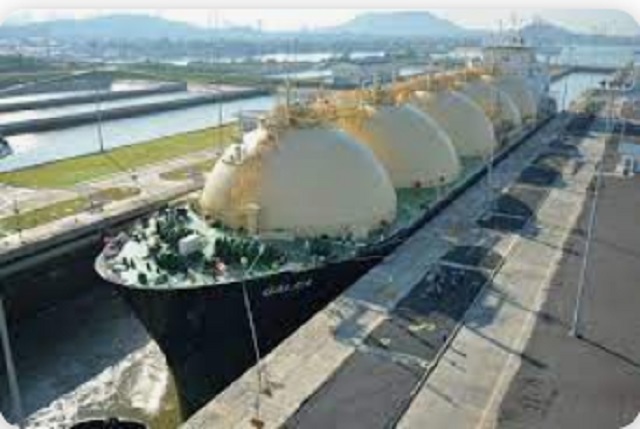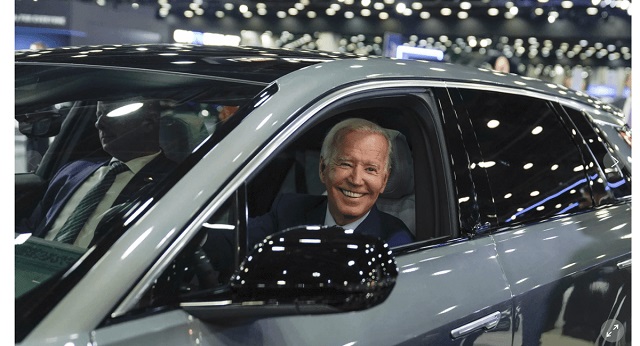Business
Canada: It’s Time to Stop Holding Ourselves Back – Lynn Exner

From Energy Now
By Lynn Exner
For decades, Canada’s provinces have behaved like crabs in a bucket—pulling each other down instead of lifting each other up. Instead of working together to build a stronger economy, we’ve allowed outdated trade barriers, regulatory red tape, and political infighting to stifle our own potential.

In my work advocating for Canadian resource development, I see it all the time. Canada has everything the world needs—energy, minerals, lumber, food, and more. But instead of ensuring our own domestic economy is strong and efficient, we’ve made it harder for businesses to grow, both within our borders and beyond them. Instead of celebrating and capitalizing on each other’s strengths, we have spent too much time competing internally, blocking opportunities, and making it difficult to trade internationally and within our own country.
That might have been tolerated in the past, when global trade was predictable and our largest trading partners were reliable. But the world has changed. Tariffs are being weaponized, supply chains are shifting, and countries everywhere are prioritizing their own industries.
If Canada wants to remain competitive, we need to start acting like a country—one with an internal economy that functions as smoothly as our external trade agreements.
The good news is that momentum is finally building to address this issue. Canada’s leaders are talking about dismantling interprovincial trade barriers—something that should have happened long ago. The challenge now is to make sure that this talk turns into action. It has been suggested it could take as little as 30 days. We can’t afford another decade of stalled negotiations, watered-down agreements, and excuses for inaction. It’s time to demand real change and hold our leaders accountable to follow through.

Every region of Canada produces something the rest of the country and the world need. Alberta’s oil and gas, Saskatchewan’s potash, Ontario’s manufacturing, Quebec’s hydroelectric power, British Columbia’s ports, and Atlantic Canada’s fisheries—these industries are the backbone of our economy. They should be supported, expanded, and celebrated. Instead, businesses and workers trying to move goods, services, and expertise across provincial lines face obstacles that weaken our ability to compete globally.
One of the most common-sense solutions is a National Energy and Resource Corridor—a dedicated infrastructure network that allows for the efficient transport of energy, minerals, and other critical resources across the country. Instead of every project facing jurisdictional battles and costly delays, a coordinated, pre-approved corridor would streamline trade and investment, ensuring that Canadian products reach both domestic and international markets without unnecessary obstacles. It would also provide a foundation for future development—whether in oil and gas, renewable energy, or critical minerals—giving businesses and investors the certainty they need to support long-term growth.
We see the need for this in our supply chains, where businesses deal with costly delays just trying to move products between provinces. We see it in our labour markets, where skilled workers face unnecessary barriers to working in other regions of the country. And we see it in national infrastructure projects that could benefit all Canadians but get tangled in red tape.

These inefficiencies cost our economy billions of dollars every year—money that should be driving investment, innovation, and job creation instead of being lost to unnecessary restrictions.
In normal times, this would be frustrating. In today’s economic and geopolitical climate, it’s reckless. The global marketplace is shifting, and Canada must be ready to meet the challenge. Instead of being held back by internal divisions, we need to work together to make Canada a stronger, more self-sufficient, and more competitive trading nation.
We’ve proven that cooperation is possible when it’s absolutely necessary. Now, we need to treat it as a permanent priority, not just a temporary fix during a crisis. This is not just about economic efficiency—it’s about Canada’s ability to stand strong in a changing world.
There is no reason why a Canadian business should have to navigate different rules and restrictions just to expand into another province. There is no reason why a worker should have to requalify to do the same job in a different part of the country. And there is certainly no reason why major projects that create jobs and economic growth should be stalled for years over jurisdictional disputes.
A crisis like this is a terrible thing to waste. The global economy is shifting, and Canada has a choice. We can cling to outdated provincial protectionism and regulatory inefficiencies, or we can remove these barriers and finally build a true national economy. We can keep acting like crabs in a bucket, pulling each other down, or we can recognize that our strength lies in working together. Instead of standing in each other’s way, we should be celebrating each other’s strengths and ensuring that every region of the country can contribute fully to our shared prosperity.
Canada has faced major challenges before, and we’ve always been at our best when we face them as a united country. Now, more than ever, we need to tap into that spirit—not just to fix today’s problems, but to prepare for whatever surprises the future holds. The time for provincial rivalries, excessive regulation, and economic inefficiency is over.
It’s time to break free from the bucket and move forward as a stronger, more competitive, and more resilient Canada.

Lynn Exner is a spokesperson for Canada Action, a volunteer-initiated grassroots group dedicated to promoting natural resource development and economic growth in Canada.
Business
Looks like the Liberals don’t support their own Pipeline MOU

From Pierre Poilievre
Business
Canada Can Finally Profit From LNG If Ottawa Stops Dragging Its Feet

From the Frontier Centre for Public Policy
By Ian Madsen
Canada’s growing LNG exports are opening global markets and reducing dependence on U.S. prices, if Ottawa allows the pipelines and export facilities needed to reach those markets
Canada’s LNG advantage is clear, but federal bottlenecks still risk turning a rare opening into another missed opportunity
Canada is finally in a position to profit from global LNG demand. But that opportunity will slip away unless Ottawa supports the pipelines and export capacity needed to reach those markets.
Most major LNG and pipeline projects still need federal impact assessments and approvals, which means Ottawa can delay or block them even when provincial and Indigenous governments are onside. Several major projects are already moving ahead, which makes Ottawa’s role even more important.
The Ksi Lisims floating liquefaction and export facility near Prince Rupert, British Columbia, along with the LNG Canada terminal at Kitimat, B.C., Cedar LNG and a likely expansion of LNG Canada, are all increasing Canada’s export capacity. For the first time, Canada will be able to sell natural gas to overseas buyers instead of relying solely on the U.S. market and its lower prices.
These projects give the northeast B.C. and northwest Alberta Montney region a long-needed outlet for its natural gas. Horizontal drilling and hydraulic fracturing made it possible to tap these reserves at scale. Until 2025, producers had no choice but to sell into the saturated U.S. market at whatever price American buyers offered. Gaining access to world markets marks one of the most significant changes for an industry long tied to U.S. pricing.
According to an International Gas Union report, “Global liquefied natural gas (LNG) trade grew by 2.4 per cent in 2024 to 411.24 million tonnes, connecting 22 exporting markets with 48 importing markets.” LNG still represents a small share of global natural gas production, but it opens the door to buyers willing to pay more than U.S. markets.
LNG Canada is expected to export a meaningful share of Canada’s natural gas when fully operational. Statistics Canada reports that Canada already contributes to global LNG exports, and that contribution is poised to rise as new facilities come online.
Higher returns have encouraged more development in the Montney region, which produces more than half of Canada’s natural gas. A growing share now goes directly to LNG Canada.
Canadian LNG projects have lower estimated break-even costs than several U.S. or Mexican facilities. That gives Canada a cost advantage in Asia, where LNG demand continues to grow.
Asian LNG prices are higher because major buyers such as Japan and South Korea lack domestic natural gas and rely heavily on imports tied to global price benchmarks. In June 2025, LNG in East Asia sold well above Canadian break-even levels. This price difference, combined with Canada’s competitive costs, gives exporters strong margins compared with sales into North American markets.
The International Energy Agency expects global LNG exports to rise significantly by 2030 as Europe replaces Russian pipeline gas and Asian economies increase their LNG use. Canada is entering the global market at the right time, which strengthens the case for expanding LNG capacity.
As Canadian and U.S. LNG exports grow, North American supply will tighten and local prices will rise. Higher domestic prices will raise revenues and shrink the discount that drains billions from Canada’s economy.
Canada loses more than $20 billion a year because of an estimated $20-per-barrel discount on oil and about $2 per gigajoule on natural gas, according to the Frontier Centre for Public Policy’s energy discount tracker. Those losses appear directly in public budgets. Higher natural gas revenues help fund provincial services, health care, infrastructure and Indigenous revenue-sharing agreements that rely on resource income.
Canada is already seeing early gains from selling more natural gas into global markets. Government support for more pipelines and LNG export capacity would build on those gains and lift GDP and incomes. Ottawa’s job is straightforward. Let the industry reach the markets willing to pay.
Ian Madsen is a senior policy analyst at the Frontier Centre for Public Policy.
-

 National13 hours ago
National13 hours agoLiberal bill “targets Christians” by removing religious exemption in hate-speech law
-

 Business1 day ago
Business1 day agoThe EU Insists Its X Fine Isn’t About Censorship. Here’s Why It Is.
-

 Focal Points2 days ago
Focal Points2 days agoCommon Vaccines Linked to 38-50% Increased Risk of Dementia and Alzheimer’s
-

 Business1 day ago
Business1 day agoCanada invests $34 million in Chinese drones now considered to be ‘high security risks’
-

 Health1 day ago
Health1 day agoCDC Vaccine Panel Votes to End Universal Hep B Vaccine for Newborns
-

 Economy1 day ago
Economy1 day agoAffordable housing out of reach everywhere in Canada
-

 Business10 hours ago
Business10 hours agoLooks like the Liberals don’t support their own Pipeline MOU
-

 Business23 hours ago
Business23 hours agoThe Climate-Risk Industrial Complex and the Manufactured Insurance Crisis




